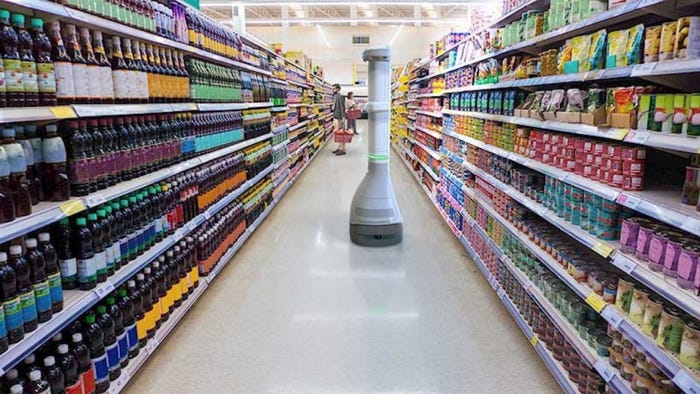IBM Taps Partners for ‘Store in The Cloud’ to Target Retail TransformationIBM Taps Partners for ‘Store in The Cloud’ to Target Retail Transformation
HP, Google and Zebra also launched retail modernization solutions at NRF.
January 25, 2020

Retailers that can offer consumers consistent omnichannel shopping in stores and online are best poised to thrive as the way customers shop and make purchase decisions continues to go through swift changes. A considerable 84% of consumers expect seamless omnichannel experiences, according to a survey conducted by IBM in partnership with the National Retail Federation (NRF).
The survey showed that 70% of consumers shop during so-called “micro-moments,” such as while they are working, commuting or watching television. At the same time, one-third of consumers have stopped doing business with their favorite retailers or brands if they lose trust in them, according to the report, released during last week’s NRF Big Show in New York, which reportedly drew 40,000 attendees.
Looking to address the rapidly shifting way consumers shop, IBM launched its “Store in the Cloud,” a partner-driven effort tied with its new Red Hat business. It’s designed to help retailers transform their business to serve the rapidly shifting way consumers shop. IBM describes its Store in the Cloud as an open environment that brings together the company’s Sterling supply-chain services, Weather Company, Watson AI and analytics, IoT, mobile development and security.
Initial partners, according to IBM, include: Flooid [formerly PCMS], which provides “seamless” transactions across digital and physical channels; Opterus, for intelligent store task management and communications; Casino Group’s RelevanC for smart loyalty and promotion management; and Trax, a provider of real-time monitoring of on shelf availability and planogram compliance.
IBM also said it is partnering with Salesforce, Publicis Sapient, project44 and Flooid to help retailers create or unify their omnichannel capabilities. Those partners will use Big Blue’s new IBM Sterling supply-chain platform to help address the increasing rush among retailers to create integrated omnichannel experiences and help them simplify how they handle returns and manage logistics. Launched in November, the IBM Sterling Supply Chain Suite is a platform and network with a development environment to enable partners to connect supply-chain networks based on the company’s Watson AI platform and its blockchain network.

IBM’s Luq Niazi
“The IBM Sterling suite is really very much focused about driving that end-to-end supply chain capability, everything from the control tower, to the optimization of the orders and the configuration as they go through the supply chain, and importantly in conjunction with our key strategic business partners,” said Luq Niazi, global managing director of IBM Consumer Industries organization, speaking to media about the survey.
Improving omnichannel experiences and integrating supply chains was a key focus of scores of major IT providers and hundreds of smaller players at the NRF show. While Microsoft presented itself at the NRF show, among other things, an alternate cloud provider to Amazon, which competes with almost every major retailer, Google Cloud also announced that it is expanding its Retail Acceleration Program (RAP) to a more extensive set of customers.
Google’s RAP is a set of services that retailers and their partners can use to optimize their websites, create aggregated views of customer data and extend traffic in stores. Google is expanding the availability of its Customer Reliability Engineering, which provides white glove service for retailers during peak shopping periods.
The company also introduced Google Cloud Search for Retail, a tool for consumers designed to make the experience of discovering products more intuitive.
“Capturing omnichannel growth ultimately means creating better online experiences,” wrote Google Cloud CEO Thomas Kurian, in a blog last week. “Powered by Google Search infrastructure and leveraging state-of-the-art cloud AI technologies, Google Cloud Search for Retail provides retailers with high-quality product search results for their websites and mobile applications — giving them the ability to surface the right products, to the right customers, at just the right time.”
While Google’s new offerings for retailers will help them enhance their online delivery, HP launched new cloud services to help them …
… more easily manage their in-store point of sale systems. Building on the launch of the HP Engage One Prime point-of-sale system at last year’s NRF show, the company launched its new HP Engage Console, a cloud-based management tool that will offer unified endpoint management of point-of-sale systems as well as distribute applications to them.

HP’s Aaron Weiss
“Basically, it enables a simple and secure push of apps and configuration settings through a single pane of glass portal,” said Aaron Weiss, VP and general manager of HP’s retail solutions business. “It reduces operating costs, while increasing uptime, and as that’s the overall goal, it also provides remote control capabilities and screen sharing. It will enable our customers – the retailers and the ISVs that adopt it – to debug issues directly. And there’s kiosk mode that will enable them to remotely play content for different use cases.”
Initially these solutions will support POS applications, but over time, Weiss said it will expand to other software.
“You’ll see us expand the use cases that will support and the monitoring the device-management capabilities, remote analytics that will go beyond just point of sale applications,” he said.
The company also launched the HP Engage Catalog, which it said makes it easier to discover, install and update applications on its POS devices and for ISVs to upload and update them directly onto HP’s servers for retailers to find. With these releases, HP’s Engage point-of-sale hardware is now certified with mobile device management (MDM) offerings from SOTI, TeamViewer and VMware and in the future Microsoft’s Intune. The solutions are slated for release next month.
 Also prominent at the NRF show were new IoT solutions with embedded intelligence for shelf and inventory management as well as various robotics offerings. A notable example was Zebra Technologies, which launched its new SmartSight, a robot integrated with intelligent automation software. It uses computer vision, machine learning, workflow automation and the robotics features of Zebra’s EMA50 mobile automation system.
Also prominent at the NRF show were new IoT solutions with embedded intelligence for shelf and inventory management as well as various robotics offerings. A notable example was Zebra Technologies, which launched its new SmartSight, a robot integrated with intelligent automation software. It uses computer vision, machine learning, workflow automation and the robotics features of Zebra’s EMA50 mobile automation system.
Zebra said the system is designed for large grocery retailers to discover when items are out of stock, inconsistencies in pricing and problems with shelf planograms. The company said SmartSight is a subscription-based offering that will detect these issues and push ways to mitigate them out to the mobile devices of store personnel. Partners can deliver it with either professional or managed services. Zebra said it can integrate with existing retail applications including buy online pickup in store (BOPIS) and buy online to deliver from store (BODFS) workflow systems.
About the Author
You May Also Like


